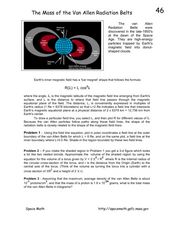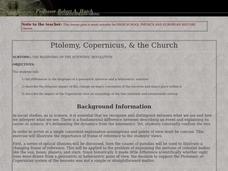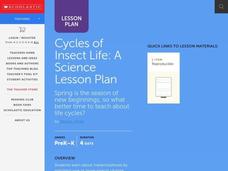Curated OER
The Mass of the Van Allen Radiation Belts
For this van Allen Radiation Belts worksheet, students are given the formula for the field line of the Earth's inner magnetic field. Students use this equation to find the polar coordinates of a field line in the van Allen Belts. They...
Curated OER
Why do Stars Rise in the East?
In this stars rise in the east learning exercise, students use geometry to show how the Earth rotates from west to east and why celestial bodies appear to rise in the east and set in the west. Students draw a figure and label given...
Curated OER
Ptolemy, Copernicus, & the Church
Students determine the difference between a geocentric universe and a heliocentric universe.
Curated OER
Fly Me to the Moon!
In this Moon travel worksheet, students construct a simple rocket trajectory called the Hohmann Transfer orbit using a compass, string, paper and a pencil. Students solve 2 problems which include finding the number of hours it takes to...
Curated OER
Compass Rose
Students describe the movement of the Earth as it relates to the sun. They construct a permanent compass rose and use it to find directions.
Curated OER
Orbital Motion
Students use a formula to measure the eccentricity of an ellipse, then state Kepler's Law of Elliptical Orbits. They predict the solar energy received at different positions in a planet's orbit.
Curated OER
Cycles of Life
Students begin their study of insect life cycles by listening to a read aloud of Eric Carle's The Very Hungry Caterpillar. They learn the vocabulary of metamorphosis including egg, larva, pupa, chrysalis, and adult. They observe actual...
Curated OER
Distance And Parallax
High schoolers will determine distances to nearby stars using parallax. In this Astronomy lesson plan, students will use a web program, trigonometry, and sketches to determine the distance of stars.







